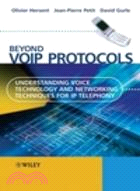| FindBook |
|
有 2 項符合
HERSENT的圖書 |
 |
$ 390 電子書 | Die Wahre Geschichte des Wilden Westens: Calamity Jane
作者:Marie Bardiaux-Vaïente,Gaëlle Hersent 出版社:Splitter Verlag 出版日期:2025-06-01 語言:德文 |
 |
$ 1100 | BEYOND VOIP PROTOCOLS: UNDERSTANDING VOICE TECHNOLOGY AND NETWORKING TECHNIQUES
作者:HERSENT 出版社:JOHN WILEY & SONS,LTD 出版日期:2005-01-01  看圖書介紹 看圖書介紹
|
|
|
|








